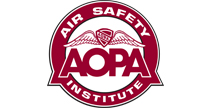Trust but verify: Unforecast ice downs Cirrus
LAX05FA088
 In northern latitudes, icing airmets are commonplace from October through April. Because ice is often over-forecast, it’s easy to let your guard down in the absence of advisories. But winter weather is fickle, and structural ice can accumulate quickly. Even an icing protection system and airframe parachute may not be enough to save a GA pilot who wanders into moderate to severe ice—and fails to act decisively.
In northern latitudes, icing airmets are commonplace from October through April. Because ice is often over-forecast, it’s easy to let your guard down in the absence of advisories. But winter weather is fickle, and structural ice can accumulate quickly. Even an icing protection system and airframe parachute may not be enough to save a GA pilot who wanders into moderate to severe ice—and fails to act decisively.
On Feb. 6, 2005, a Cirrus SR22 encountered unforecast icing conditions shortly after departing Reno, Nev. The iced-up airplane entered an uncontrolled descent, during which the pilot activated the ballistic recovery parachute well outside the system’s maximum deployment airspeed. The chute ripped free under the excessive load, and the aircraft continued its plunge into the mountainous terrain below, killing the pilot.
The flight departed Reno/Tahoe International Airport at 5:50 p.m. About an hour and a half earlier, the pilot had called flight service for a standard weather briefing and to file an IFR flight plan to Oakland, Calif. The briefing contained no overt indications of icing—no airmets, sigmets, or pireps along the intended route. However, a cold front was advancing toward the area from the northwest, and the briefer advised the pilot that she saw precipitation ahead of the front. The freezing level ranged from 6,000 to 7,000 feet msl, well below the minimum IFR altitude of 11,500 feet msl over the Sierra Nevada mountain range.
After departing Reno, the pilot climbed to his assigned altitude of 14,000 feet msl. At 6:07 p.m., he asked ATC if he could climb to 16,000 feet to “see if I can get above these clouds.” Six minutes later, the pilot reported he was still in the clouds and asked about going lower. While waiting for his clearance to descend, the pilot changed his mind and told ATC that “if I could go up, uh, another two, three hundred feet, I could get above these clouds.” He was cleared for a block altitude between 16,000 and 17,000 feet msl.
At 6:17 p.m., at an altitude of 16,700 feet msl, the pilot called ATC and reported, “Uh, I’m coming down... I guess I’m icing up.” The pilot’s lack of urgency failed to catch the controller’s attention. Fifteen seconds later, ATC asked the Cirrus pilot to repeat his last transmission, to which he responded, “I’m icing up! I’m coming down!” The frantic final call was followed by 10 seconds of open-mic static.
Later that night, workers at the Sugar Bowl ski resort near Tahoe City, Calif. came across a large parachute and several small pieces of debris. The ends of the chute’s suspension lines were broomstrawed, indicating the tethers had shredded under extreme loads. The Cirrus airframe parachute’s maximum deployment speed is 133 knots, yet the diving aircraft likely was well in excess of redline speed when the chute was finally deployed. The main wreckage was discovered about a mile away the following morning.
NTSB investigators determined the probable cause of the accident to be the pilot’s in-flight loss of control following an inadvertent encounter with unforecast severe icing conditions. The National Weather Service’s inaccurate icing forecast was cited as a factor in the crash.
According to the NTSB report, the accident aircraft likely encountered severe icing related to supercooled large droplets (SLD). The Cirrus was not approved for flight into known icing conditions, but was equipped with weeping-wing ice protection—a “no hazard” system designed to help a pilot escape inadvertent icing encounters. SLD icing can quickly overwhelm such systems, however, because the large drops create substantial runback before freezing, allowing ice to build up beyond the system’s reach.
Although the weather forecast contained no formal icing advisories, the warning signs were there. The pilot was flying above the freezing level, and an approaching cold front was bringing precipitation toward the route of flight. The conditions warranted caution and vigilance once airborne. “Trust but verify” should be a pilot’s mantra when evaluating any weather forecast.
The pilot likely began to pick up ice about 15 minutes into the flight, when he first requested a different altitude. He said nothing to ATC, however, and tried to escape the ice by climbing to 16,000 feet, then even higher. Attempting to climb out of ice can be a risky escape strategy, given the lift-robbing effects of ice accretion. Moreover, the non-turbocharged Cirrus was nearing its service ceiling of 17,000 feet msl.
Roughly 10 minutes passed before the pilot finally told ATC that he was picking up ice. By then, the situation was dire and the pilot was struggling to maintain control of the airplane. When an aircraft encounters ice, every second counts. The most reliable escape option—course reversal—becomes less and less viable the longer the airplane plunges ahead. Pilots shouldn’t hesitate to tell ATC that they need an “immediate” climb, descent, or turn.
This accident also illustrates the critical need for pilot weather reports. Forecasts are educated guesses. Pireps provide crucial reality checks, giving pilots and forecasters information on actual conditions. On the night of the accident, icing pireps began to filter in shortly before the Cirrus pilot lost control. Had there been more of them, sooner, tragedy might have been averted.
Related Links
- “Weather Wise: Precipitation & Icing” interactive course
- “SkySpotter: Pireps Made Easy” interactive course
- “Iceman” Real Pilot Story
- “Aircraft Icing” Safety Advisor
- Air Safety Foundation Accident Database